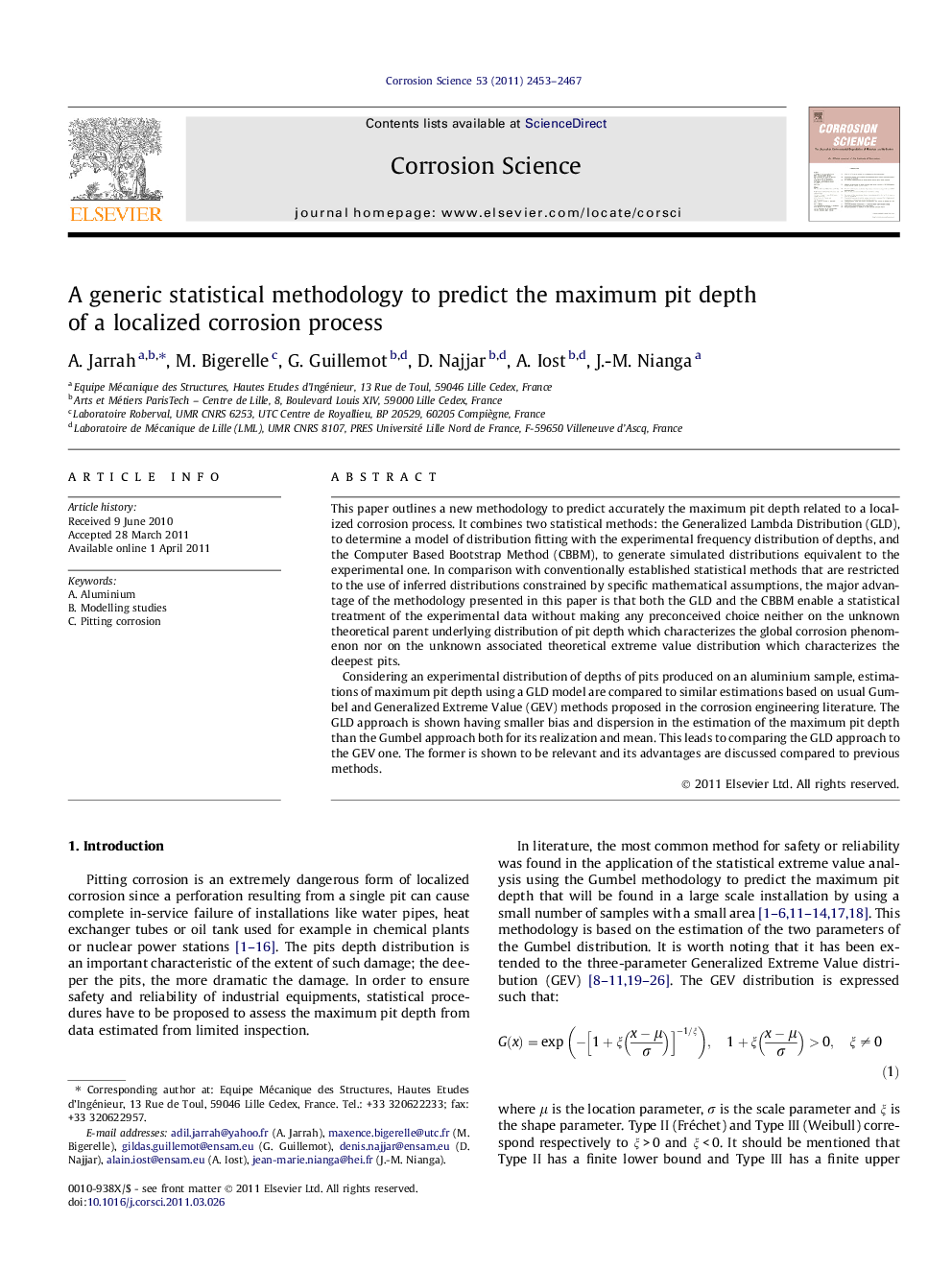| Article ID | Journal | Published Year | Pages | File Type |
|---|---|---|---|---|
| 1470010 | Corrosion Science | 2011 | 15 Pages |
This paper outlines a new methodology to predict accurately the maximum pit depth related to a localized corrosion process. It combines two statistical methods: the Generalized Lambda Distribution (GLD), to determine a model of distribution fitting with the experimental frequency distribution of depths, and the Computer Based Bootstrap Method (CBBM), to generate simulated distributions equivalent to the experimental one. In comparison with conventionally established statistical methods that are restricted to the use of inferred distributions constrained by specific mathematical assumptions, the major advantage of the methodology presented in this paper is that both the GLD and the CBBM enable a statistical treatment of the experimental data without making any preconceived choice neither on the unknown theoretical parent underlying distribution of pit depth which characterizes the global corrosion phenomenon nor on the unknown associated theoretical extreme value distribution which characterizes the deepest pits.Considering an experimental distribution of depths of pits produced on an aluminium sample, estimations of maximum pit depth using a GLD model are compared to similar estimations based on usual Gumbel and Generalized Extreme Value (GEV) methods proposed in the corrosion engineering literature. The GLD approach is shown having smaller bias and dispersion in the estimation of the maximum pit depth than the Gumbel approach both for its realization and mean. This leads to comparing the GLD approach to the GEV one. The former is shown to be relevant and its advantages are discussed compared to previous methods.
► We propose a methodology to predict the maximum pit depth in a corrosion process. ► Generalized Lambda Distribution and the Computer Based Bootstrap Method are combined. ► GLD fit a large variety of distributions both in their central and tail regions. ► Minimum thickness preventing perforation can be estimated with a safety margin. ► Considering its applications, this new approach can help to size industrial pieces.
